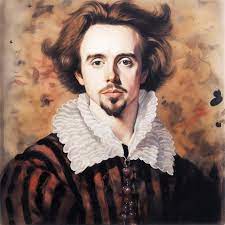Robert Louis Stevenson Biography:
- A Scottish Master of Words: Robert Louis Stevenson (1850-1894) was a renowned Scottish novelist, essayist, poet, and travel writer. His captivating adventures, psychological explorations, and lyrical prose continue to enthrall readers worldwide.
- A Life Steeped in Story: Stevenson’s life, marked by illness, travel, and a fervent imagination, intertwined with his literary pursuits. His experiences traversing Europe, the South Pacific, and North America instilled a sense of exploration and adventure in his works.
Robert Louis Stevenson Nationality & Age:
- Scottish Pride: Born in Edinburgh on November 13, 1850, Stevenson embraced his Scottish identity and heritage. His works often referenced Scottish landscapes, culture, and folklore, adding a distinctive flavor to his narratives.
- A Short But Prolific Life: Unfortunately, Stevenson’s life was cut short at the age of 44 due to a cerebral hemorrhage in 1894. Despite his limited time, he left behind a remarkable body of work that continues to resonate with readers across generations.
Robert Louis Stevenson Education and Schooling:
- Following Family Tradition: As the son of a lighthouse engineer, Stevenson was initially expected to follow in his father’s footsteps. He enrolled in Edinburgh University to study civil engineering, but his passion for literature soon took hold.
- A Writer in the Making: While at university, Stevenson actively participated in the literary society and honed his writing skills. He also ventured on travels across Europe, experiences that later fueled his adventurous tales.
Robert Louis Stevenson Relationship and Personal Life:
- Love Finds Its Course: In 1878, Stevenson met Fanny Osbourne, a divorced American woman with a son. Despite societal disapproval, they married in 1880 and remained a devoted couple until his death. Fanny served as his collaborator and editor, playing a crucial role in his success.
- A Journey Together: The Stevensons embarked on numerous journeys together, traversing the South Pacific and ultimately settling in Samoa. These shared experiences provided rich material for his writing, reflecting themes of family, nature, and cultural encounter.
Robert Louis Stevenson Career Beginnings:
- Early Experiments: Stevenson’s early writing consisted of essays, travel narratives, and poems. He published his first book, “An Inland Voyage,” in 1878, showcasing his keen observation and descriptive power.
- Building a Reputation: He gained recognition with “Treasure Island” (1883), a thrilling pirate adventure that captured the imagination of readers worldwide. This success allowed him to dedicate himself fully to writing.
Robert Louis Stevenson Net Worth in 2024:
- Historical Context: Determining a precise net worth for Stevenson in today’s currency wouldn’t provide an accurate reflection of his financial situation or the value of his work. His impact transcends monetary measures.
- Literary Legacy: His lasting contribution lies in the enduring value and popularity of his literary works, ensuring his name remains etched in literary history.
Robert Louis Stevenson Career and Contributions:
- Genre-Bending Master: Stevenson explored various genres, from thrilling adventures like “Kidnapped” (1886) to psychological explorations like “The Strange Case of Dr. Jekyll and Mr. Hyde” (1886). His versatility and experimentation continue to inspire writers.
- Lasting Impact: His captivating narratives, vivid characters, and exploration of morality and good versus evil have secured his place as a literary icon. His writing style, combining adventure, suspense, and psychological depth, continues to captivate readers of all ages.
Robert Louis Stevenson Achievements and Awards:
- Critical Acclaim: While Stevenson didn’t receive any major literary awards during his lifetime, his works were widely praised by critics and fellow writers. His enduring popularity and influence on writers like H.G. Wells, Joseph Conrad, and Rudyard Kipling serve as lasting testaments to his achievement.
- Popular Recognition: The enduring popularity of his works, translated into numerous languages and adapted into movies, stage plays, and television shows, speaks volumes about his impact on readers and popular culture.
Robert Louis Stevenson Social Media Accounts:
- Historical Figure: As Robert Louis Stevenson died in 1894, social media platforms as we know them today didn’t exist during his lifetime. His legacy lives on through his published works and the numerous organizations and societies dedicated to preserving his memory.
- Engaging with His Work: Readers can connect with Stevenson’s spirit by immersing themselves in his vast body of work, actively engaging with online communities dedicated to his works, and visiting museums and historical sites related to his life and writing.



